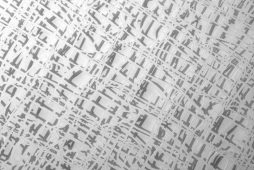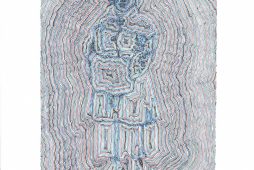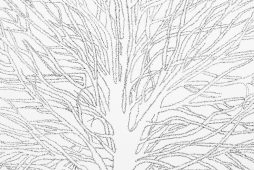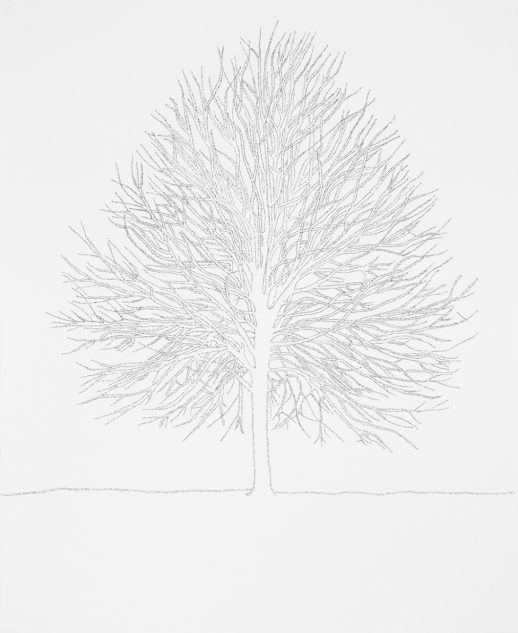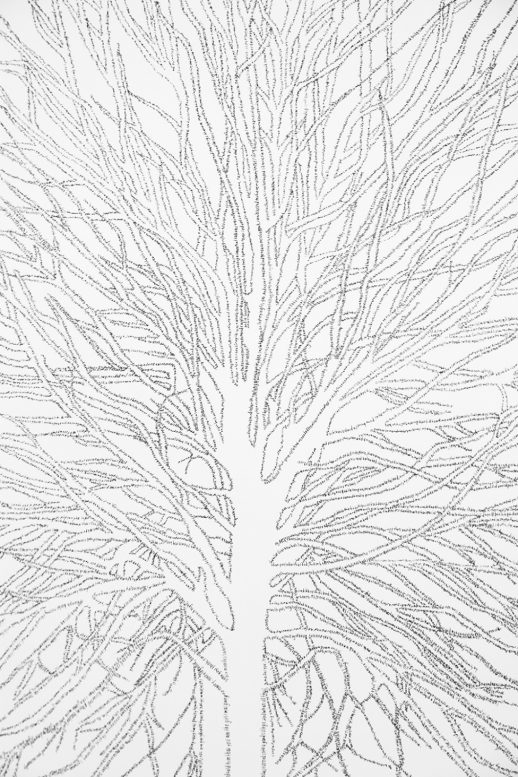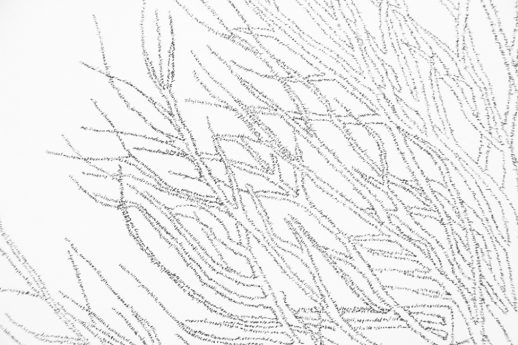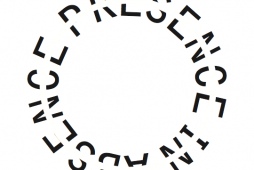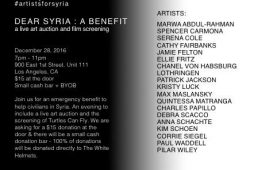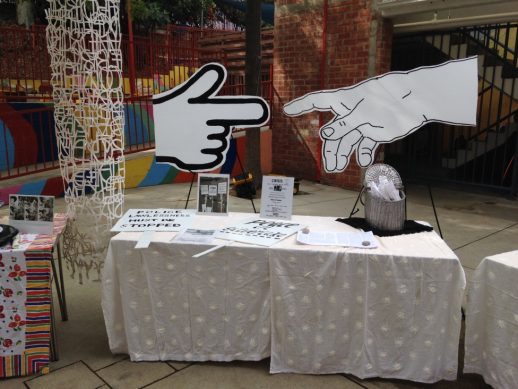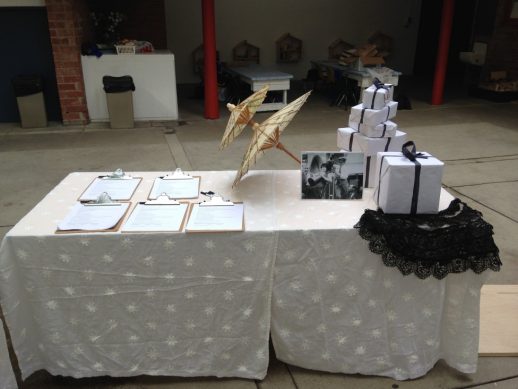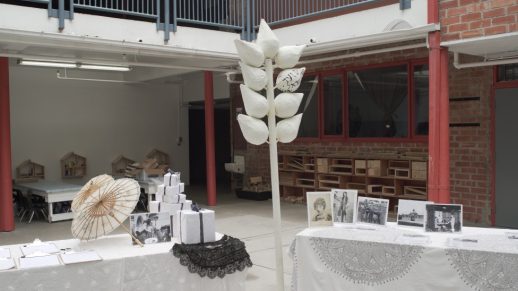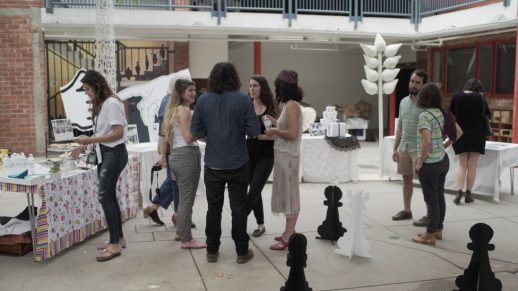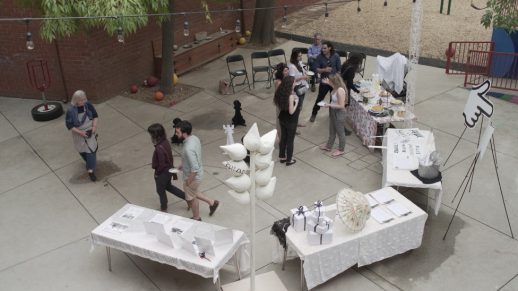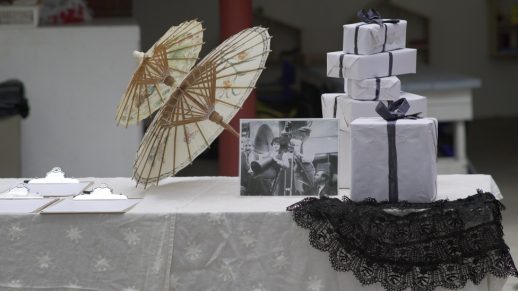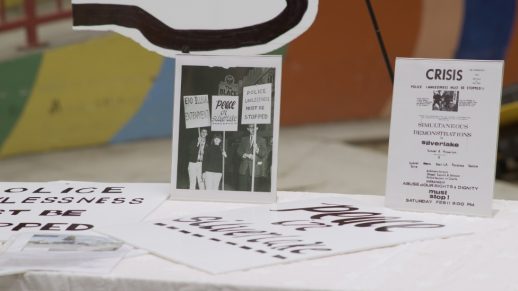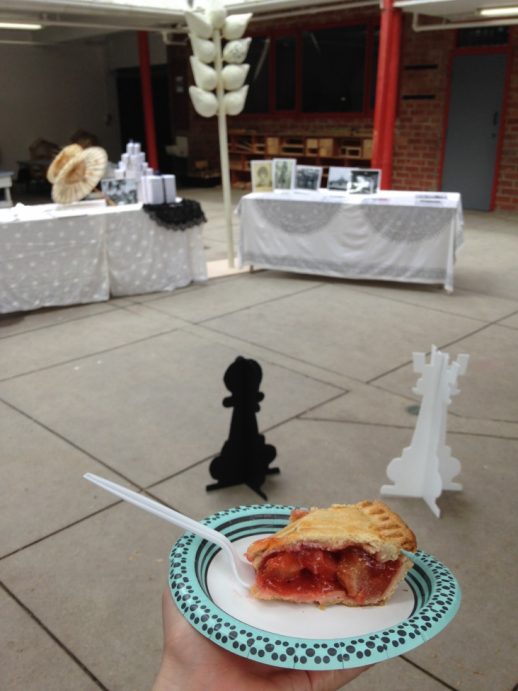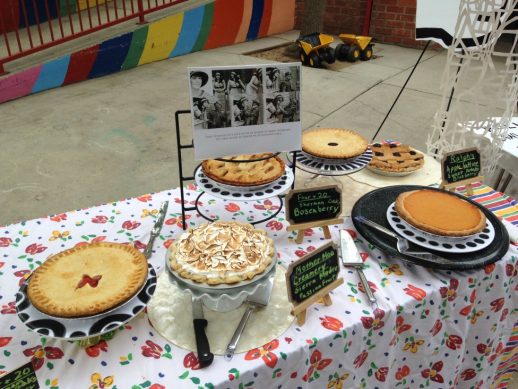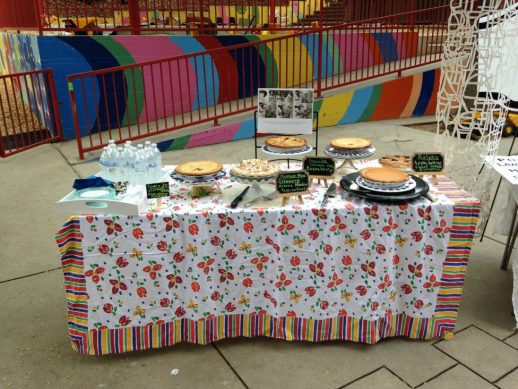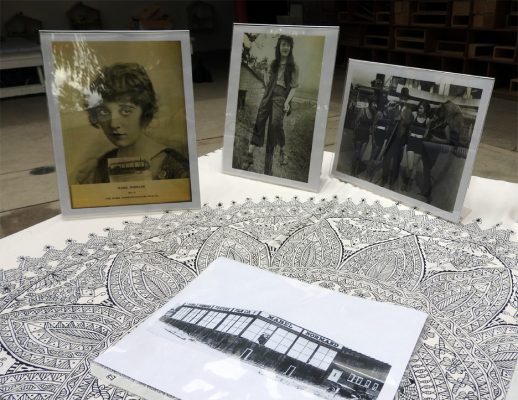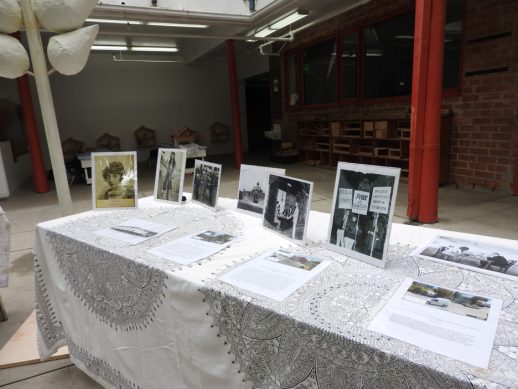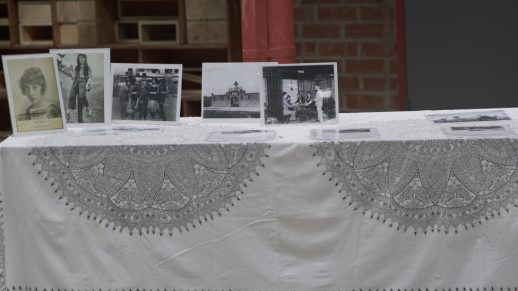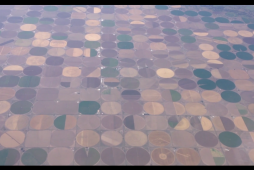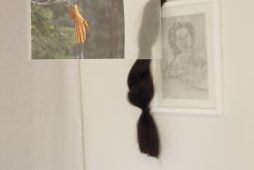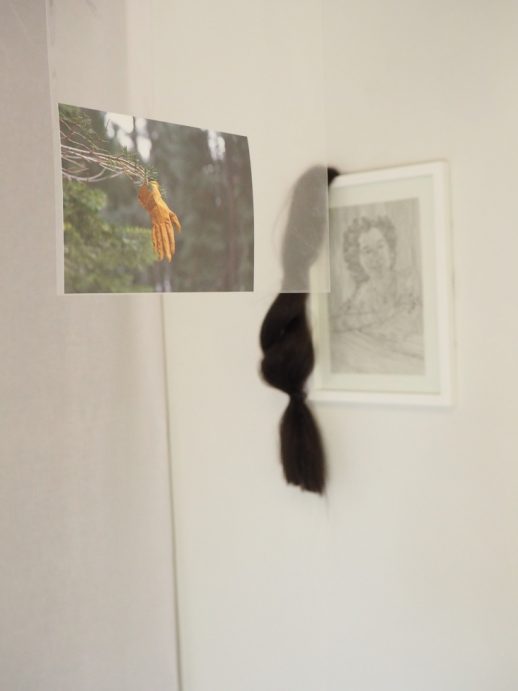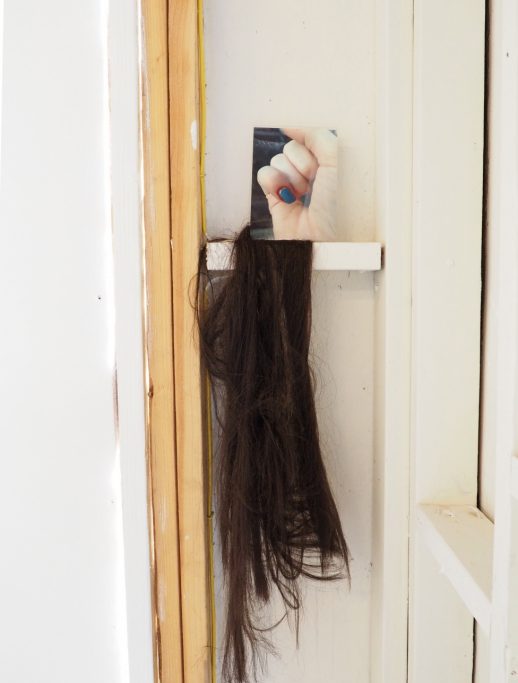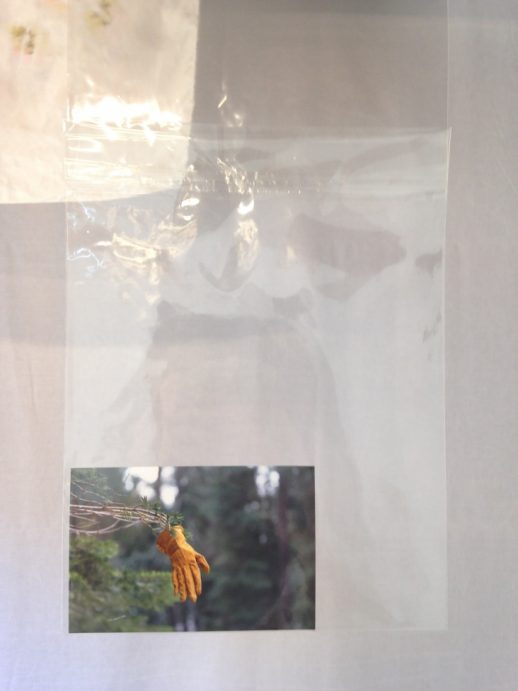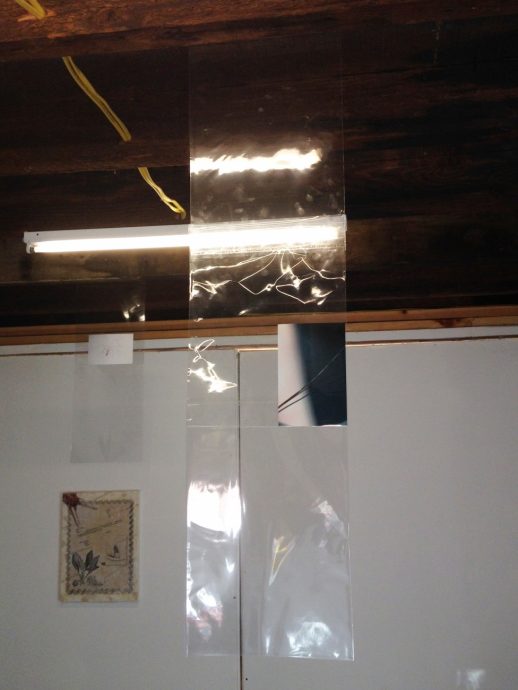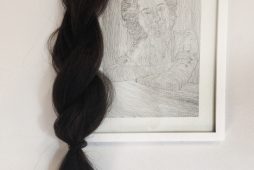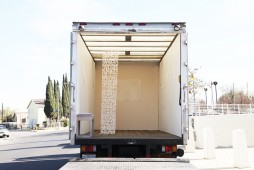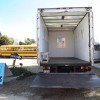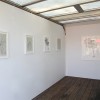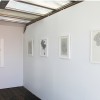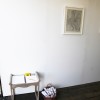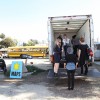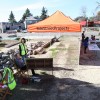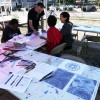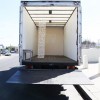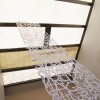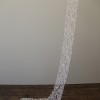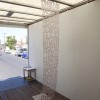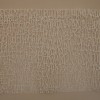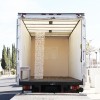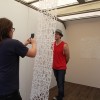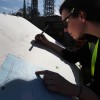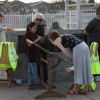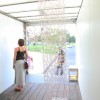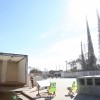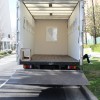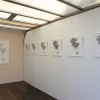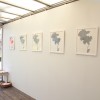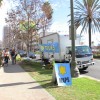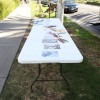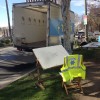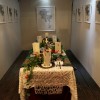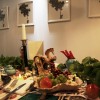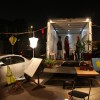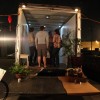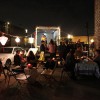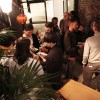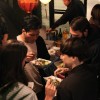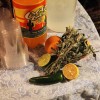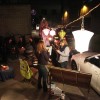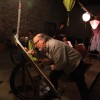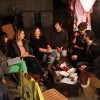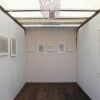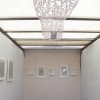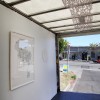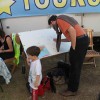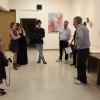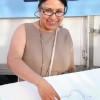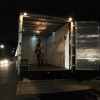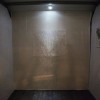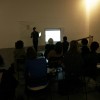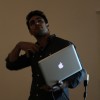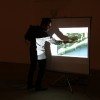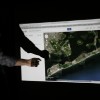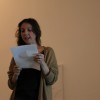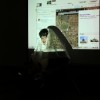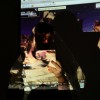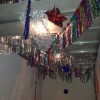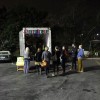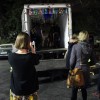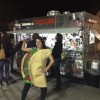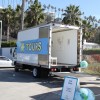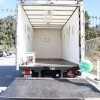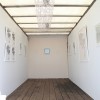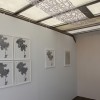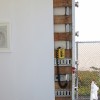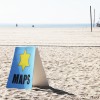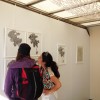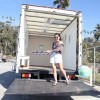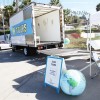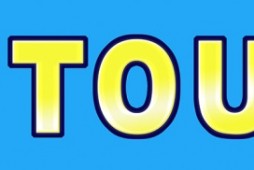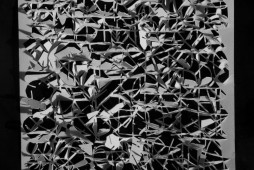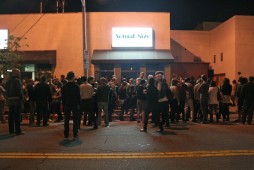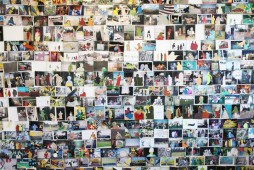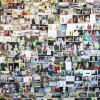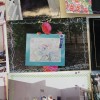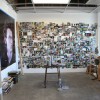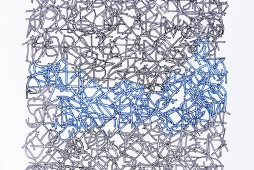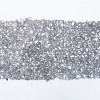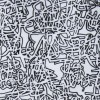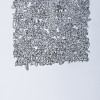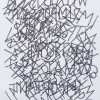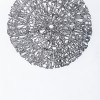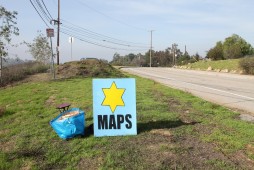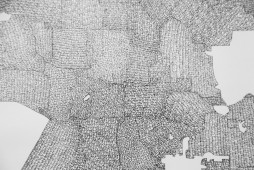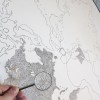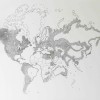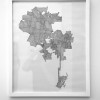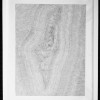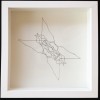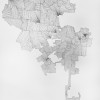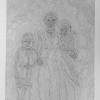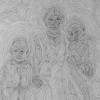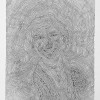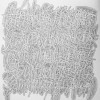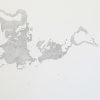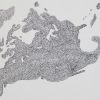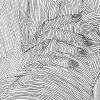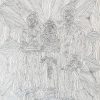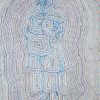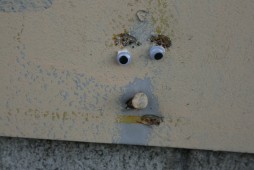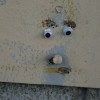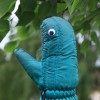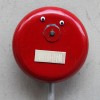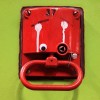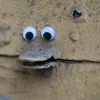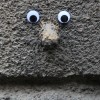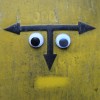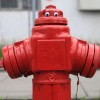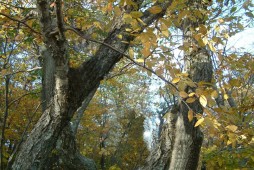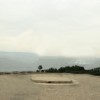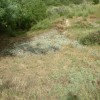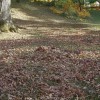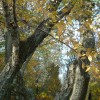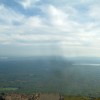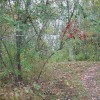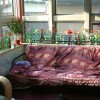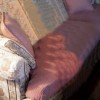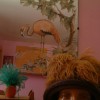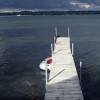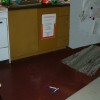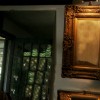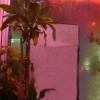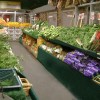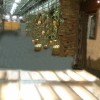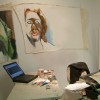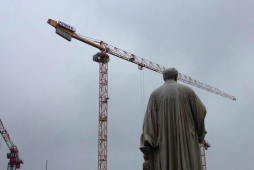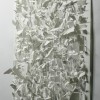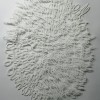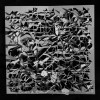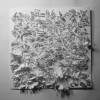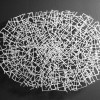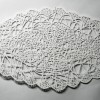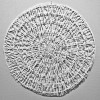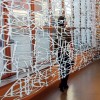-

Star Maps
Star map
Xerox on paper, 2012
-
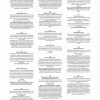
Star Maps
Star map
Xerox on paper, 2012
-

Star Maps
Star Maps
Performance and ephemera, Dimensions variable, 2012
-

Star Maps
Star Maps
Xerox on Paper scrolls
-
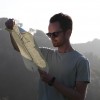
-
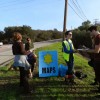
Star Maps
Star maps
Mixed Media performance, 2012
-
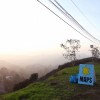
Star Maps
Star Maps
Mixed Media performance, 2012
-

Star Maps
Star Maps
installation mock up, dimensions variable
Maps at Mullholland Dérive
December 9, 2012
12:00-6:00PM
Barbara Fine Summit Overlook
11801 Mulholland Drive, Los Angeles, California 91604
Sunday December 9, 2012, Corrie participated in Mulholland Dérive, a day of site specific interventions by over 100 artists along the 21 mile stretch of Mullholland Drive. From 12:00- 6:00PM she was stationed at Barbara Fine Summit Overlook in order to circulate free maps to passing motorists and pedestrians. These maps, which reference early Renaissance and turn of the century documents, explore Los Angeles history and draw parallels to biblical narrative and visions of “The Holy Land”. This project is made possible by the Six Point Fellowship. The Six Points Fellowship for Emerging Jewish Artists is a program of the Foundation for Jewish Culture, originally founded in partnership with Avoda Arts and JDub. The Six PointsFellowship LA Cohort is made possible through major funding from The Jewish Federation of Greater Los Angeles, the Jewish Community Foundation of Los Angeles, and the Righteous Persons Foundation.
Map text is included below
LEGEND
A gorgeous spectacle of illumination… the great vault above and the sea of sparkling gems below seem to reflect eternal harmony, and here, from your living room on Mulholland Highway, the great producer stages for you each night a glorious spectacle that cannot be described.
–Marvin Braude, Los Angeles City Council member from 5726 (1965) to 5758 (1997)
I
23392 Mulholland Drive
It was you who opened up springs and streams; you dried up the ever flowing rivers
–Psalm 74:15
Mulholland Highway dedication site: It was on this site in Kislev 30, 5685 (December 1924) William Mulholland broke a bottle of water upon the gate to christen the Mulholland Highway. Mulholland, an Irish immigrant, was the main individual responsible for building the Los Angeles aqueduct. This transported water from the Owens Valley to Los Angeles, and made possible for the city to become a sprawling metropolis. The University of California at Berkeley honored William Mulholland with an honorary doctorate with a latin inscription that invoked the story of Moses leading the Hebrews through the desert “he broke the rocks and brought the river to the thirsty land”.
II
3600 Reseda Boulevard
Hundreds of thousands of years ago our ancestors of dim and distant past faced the same problems which we must face possibly in these same primeval forests. That we are here today evidences this victory
– Edgar Rice Burroughs- Tarzan of the Apes
Marvin Braude Mulholland Gateway Park, Tarzana: The community of Tarzana is named after the hero of Edgar Rice Burroughs’ novels, this land once belonged to the author. Actor Johnny Weissmuller played the part of Tarzan in many movies. He was a beloved screen hero in Israel where most assumed he was Jewish.
III
17500 Mulholland Drive
And I will give peace in the land, and you shall lie down, and more shall make you afraid: and I will rid evil beast of the land, neither shall the sword go through the land-Leviticus 26:6
Nike Missile Site: This 1306 cubit (1,960 foot )summit was a Nike missile station during the Cold War. In the 5710s- 20s (1950s -60s) this station would have been used through the 12 hours of darkness and 12 hours of sunlight (24 hours a day) in order to guard against possible Communist attacks against Los Angeles .
IV
16500 Mulholland Drive
And, behold, the Lord passed by, and a great and strong wind rent the mountains, and brake in pieces the rocks before the Lord; but the Lord was not in the wind: and after the wind an earthquake; but the Lord was not in the earthquake: And after the earthquake a fire; but the Lord was not in the fire: and after the fire a still small voice.
-Kings19:11
LA Fire Department Station 109
V
15000 Mulholland Drive
Now in all Israel there was no one so much praised for his handsome appearance as Absalom. From the sole of his foot to the crown of his head there was no blemish in him. And when he cut the hair of his head ( for the end of every year he used to cut it; when it was heavy on him, he cut it) he weighed the hair on his head, two hundred shekels by the weight
–Samuel 14:25-26
Singleton House/ Vidal Sassoon Residence: designed by architect Richard Neutra in 5719 (1959). Vidal Sassoon was known for his architectural hairstyles.
VI
[14200-14410] Mulholland Drive
Ask where the good road is. The godly paths they used to walk in. In the days of long ago. Travel there and you will find rest for your souls
– Jeremiah 6:16
Barbara Fine Overlook: Named for local environmentalist who was instrumental in creating a citywide hillside ordinance which limits the number and size of homes that can be built on hillside properties in mountain ranges throughout Los Angeles in the 5740s (1980s) She was also a crucial force behind the creation of the Mulholland Scenic Parkway Specific Plan, which shapes development along a days journey long (22 miles) of the Scenic Parkway.
VII
1579 Benedict Canyon Dr.
But they that hope in the Lord shall renew their strength, they shall take wings as eagles, they shall run and not be weary, they shall walk and not faint.
— Isaiah 40:31
George Reeves, who portrayed Superman on television died in this house in Sivan 10, 5719 (1959). Superman was created by Jerry Siegel and Joe Schuster, who were inspired by Friedrich Nietzsche’s idea of an Übermensch to create the first versions the character. As The Nazis grew to prominence in Germany they distorted concepts of the Übermensch to make statements about racial purity. Siegel and Joe Schuster continued to develop this character during this time, transforming him into an orphan Moses figure, from a far away land, who had the ability to fit into society but also had the power to transform beyond human expectation.
VIII
2600 Franklin Canyon Drive
Blessed shall you be in the city, and blessed shall you be in the field. Blessed shall be the fruit of your womb and the fruit of your ground and the fruit of your cattle, the increase of your herds and the young of your flock.
-Deuteronomy 28:1-68
Sooky Goldman Nature Center:Named after a local political organizer and fund-raiser. This educational facility for inner-city children enables its visitors to experience wilderness only miles from downtown Los Angeles.
IX
12601 Mulholland Drive
He is like a tree planted by streams of water that yields its fruit in its season, and its leaf does not wither. In all that he does, he prospers.- Psalm 1:3
Tree People: Environmental non-profit founded by then- teenager Andy Lipkis, dedicated to creating a sustainable future through nature.
X
12001 Crest Circle
Then Moses went up to God, and the Lord called to him from the Summit and said, ‘This is what you are to say to the house of Jacob and what you are to tell the people of Israel.’
-Exodus 19.3
XI
2244 Stanley Hills Drive
Human beings have indeed become primarily tool- making animals, and the world is now a gigantic tool box for the satisfaction of their needs… Nature is a toolbox in a world that does not point beyond itself. It is when nature is sensed as mystery and grandeur that it calls upon us to look beyond it
Rabbi Abraham Joshua Heschel- God in Search of Man
Disputed wildlife corridor location: Pulitzer Prize winning author Jared Diamond advocates for wildlife corridors to enable animals to survive in urban areas.
XII
2400 or 2345 Laurel Canyon Boulevard
or 8205 Lookout Mountain Avenue
Do not turn to mediums or necromancers; do not seek them out, and so make yourselves unclean by them: I am the Lord your God.
-Leviticus 19:31
Harry Houdini’s possible residence in 5680s (1920s): Houdini was an Immigrant son of a Rabbi who became known world over for his escape stunts. Houdini was also committed to debunking Spiritualism. During the 5661s (1900s) many who were grieving would pay enormous sums of money in order to contact the dead. Houdini used his knowledge of slight of hand to publicly reveal the tricks that self-proclaimed spiritual mediums used to prey upon the emotions of the bereaved. After Houdini died rumors spread that his spirit was attempting to communicate to the world of the living.
XIII
8021 Mulholland Drive
Now Mount Sinai was wrapped in smoke because the Lord had descended on it in fire. The smoke of it went up like the smoke of a kiln, and the whole mountain trembled greatly.
– Exodus 19:18
LA Fire Department Station 97
XIV
7701 Mulholland Dr.
From this point you may view the tunnels to Jerusalem.
Universal City Overlook: Here you can view from above the former backlot that set the stage for numerous westerns and other fabricated scenes.
XV
3574 Multiview Drive
And the house, when it was in building, was built of stone made ready before it was brought thither: so that there was neither hammer nor axe nor any tool of iron heard in the house, while it was in building.
– Kings 4:7
The 5719 (1958) Millard Kaufman House by architect Richard Neutra: – Millard Kaufman was a screenwriter who invented the near-sighted cartoon character Mr. Magoo.
XVI
3580 Multiview Drive
I consider myself the first and still one of the few architects who consciously abandoned stylistic sculptural architecture in order to develop space as a medium of art
-Rudolph Schindler.
Prepare your work outside; get everything ready for yourself in the field, and after that build your house.- Proverbs 24:27
Kallis House by Rudolph Schindler.
XVII
7436 Mulholland Drive
For he is our peace, who hath made both one, and hath broken down the middle wall of partition between us Ephesians 2:14
Garcia House by Lautner 1962 (5722) hovers over the hillside, using two V-shaped beams planted in the ground. In movie Lethal Weapon 2, Mel Gibson ties his truck to one of the support beams to pull the structure from its perch.
XVIII
7036 Mulholland Drive
You shall not make idols for yourselves or erect an image or pillar, and you shall not set up a figured stone in your land to bow down to it
– Leviticus 26:1
Hollywood Bowl Overlook: 30 cubits high (45-ft) & 233 cubits long (350 ft), this sign was originally created as a housing development advertisement in 1923, but garnered increasing recognition over time. In Nissan 22, 5737 (April 1977) , the sign was modified to read HOLYWOOD for Easter. In 5738 (1978 ) the second L was covered for Pope John Paul II when he visited.
A person must long to attain the highest possible level. And he must not allow himself to fall from even the smallest level- Rabbi Nachman, Sarfrey Kodesh
On Elul 17, 5692 (September 18, 1932,) the body of actress Peg Entwistle was found in a ravine below the sign. Police surmised that Entwistle jumped to her death.
XIX
6342 Mulholland Drive
And they said to one another, “Come, let us cast lots, that we may know on whose account this evil has come upon us.” So they cast lots, and the lot fell on Jonah.
– Jonah 1:7.
Castillo del Lago: Built in 1926 (5686) for the oil explorer Patrick Logdon, This home later became the home for famous mobster Bugsy Siegel. It is rumored that this castle became haunted while it was used as a speakeasy and gambling hall. In 5754 (1993) Madonna bought the property and spent 568,181 Drachma ($3 million ) redecorating it. Some believe that she used Kabbalah, a form of Jewish mysticism to remove the bad forces that occupied the house.
Created by Corrie Siegel, Kislev, 24, 5773 (2012). Research assistance provided by Diane Siegel. This project was generously supported by the Six Points Fellowship.The Six Points Fellowship for Emerging Jewish Artists is a program of the Foundation for Jewish Culture, originally founded in partnership with Avoda Arts and JDub. The Six Points Fellowship LA Cohort is made possible through major funding from The Jewish Federation of Greater Los Angeles, the Jewish Community Foundation of Los Angeles, and the Righteous Persons Foundation.
corriesiegel.com
I think because of the views, Mulholland gives you a semi religious feeling of being up there and in control- it is where Satan would take you if he were to offer you the city.
David Thomson- Film critic and historian.


